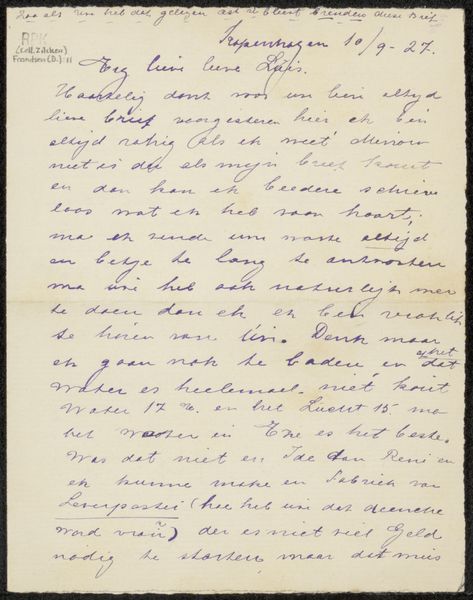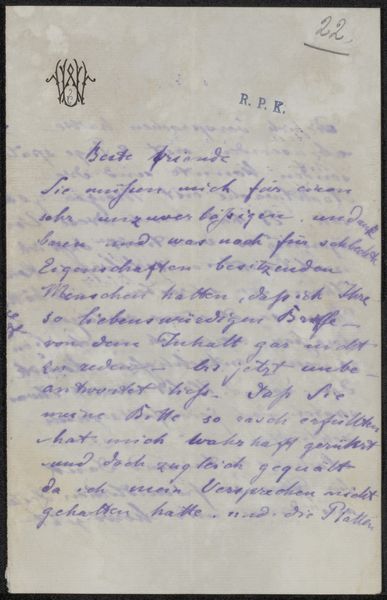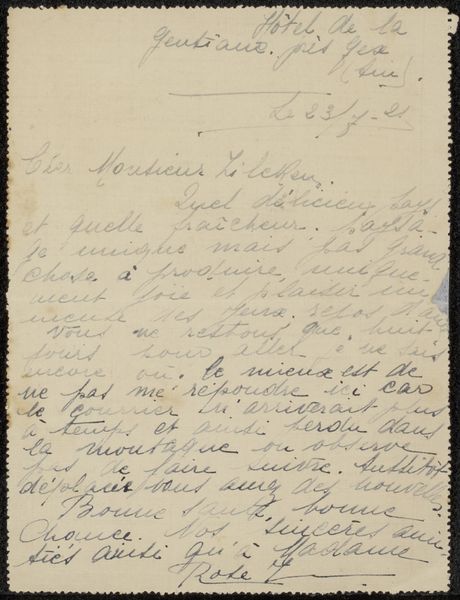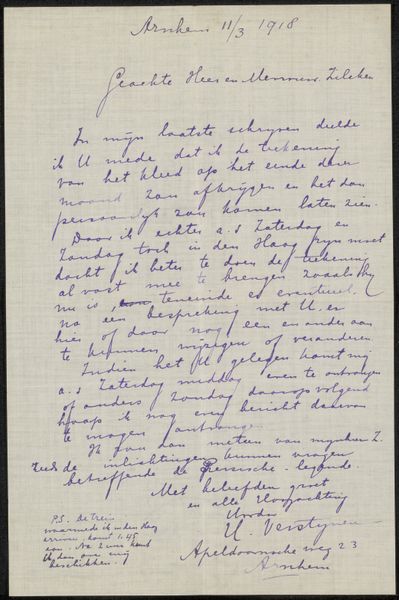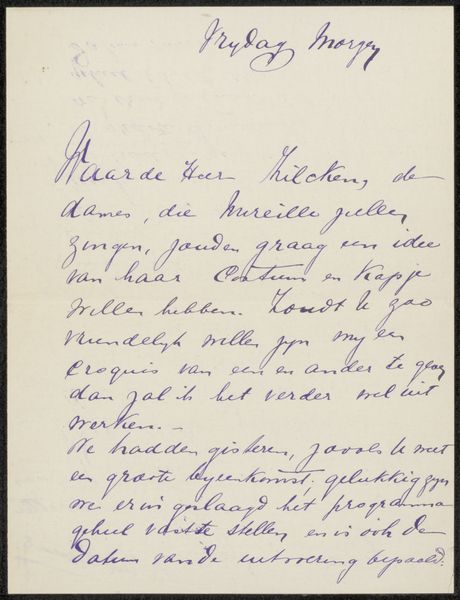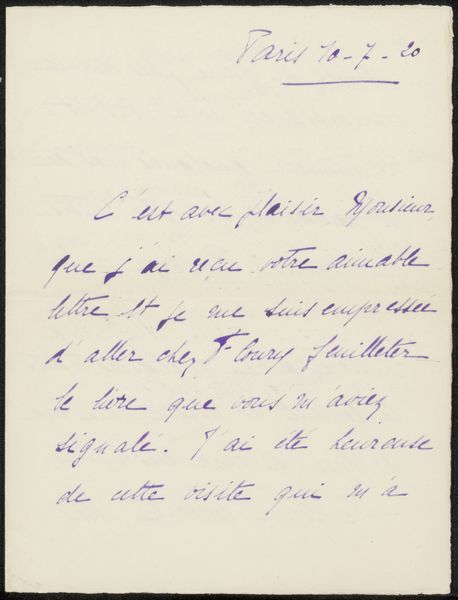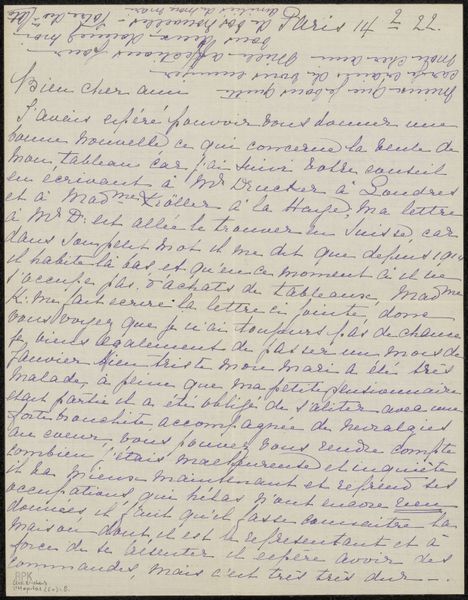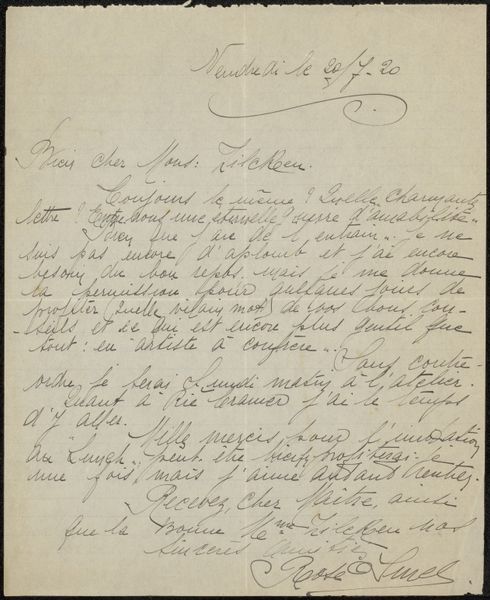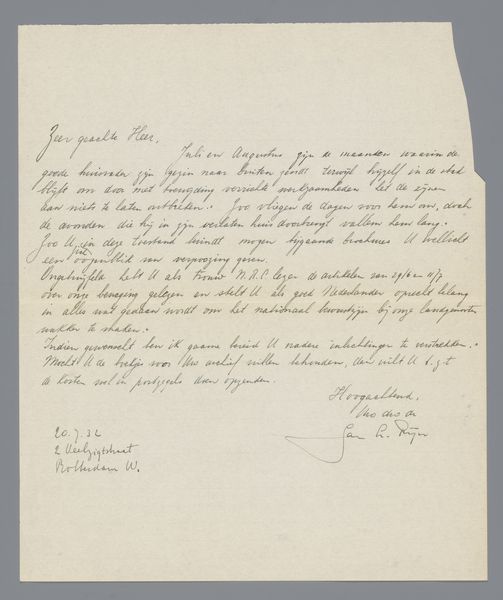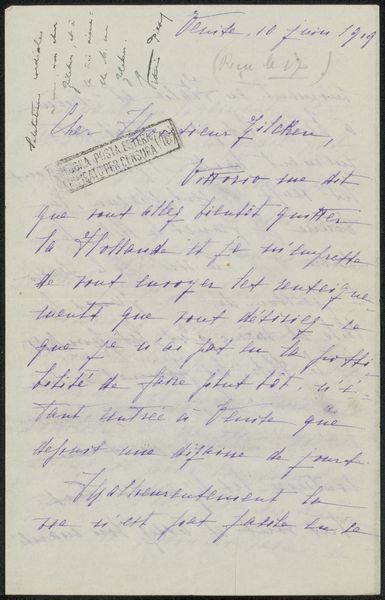
drawing, paper, ink, pen
#
drawing
#
hand-lettering
#
pen sketch
#
hand drawn type
#
hand lettering
#
paper
#
personal sketchbook
#
ink
#
ink drawing experimentation
#
pen-ink sketch
#
pen work
#
sketchbook drawing
#
pen
#
sketchbook art
#
calligraphy
Copyright: Rijks Museum: Open Domain
Editor: Here we have "Brief aan Frans Buffa en Zonen," a letter by William Unger, possibly from 1877. It's pen and ink on paper, showcasing Unger's calligraphic skill. The writing itself, a sort of inky swirl, feels both intimate and distant. What do you see in this piece? Curator: It's interesting you pick up on that tension. Letters, especially from this period, become potent objects for exploring social and economic power dynamics. Who was Frans Buffa, and what kind of relationship did Unger have with them? The letterhead and careful penmanship signal a certain level of social standing, but the content itself likely speaks to specific negotiations within a particular historical context. Editor: I hadn’t considered it in terms of power. So, it's more than just a pretty script; it's a record of interactions and possibly negotiations? Curator: Precisely. We can even look at the use of language – is there a formality, a supplication, or perhaps even an assertion of authority in Unger's tone? Analyzing these linguistic choices can offer insights into the social performance inherent in letter writing, particularly concerning class and perhaps even coloniality if Buffa was involved in global trade. What does the script remind you of, beyond calligraphy? Editor: Hmm, it feels almost like a financial document? Neat, but very focused on certain information, especially regarding sums of money. Curator: Exactly. And that focus, as you rightly observed, points us back to considering the material realities and economic structures that underpinned this correspondence. Do you see any hints that can orient us in relation to the location where this letter may have been sent to or received from? Editor: It seems very specific and financial and commercial somehow... perhaps like the Netherlands? Curator: Interesting. Yes, the language is consistent with it having been sent to a business based in the Netherlands, where William Unger lived for most of his life. How might we then use these small threads, the visual qualities and details, to contextualize this piece? Editor: I now view it not just as a letter, but as a trace of a specific relationship, a financial dealing maybe, that existed within a complex historical framework. Curator: And those seemingly small threads allow us to weave together narratives about identity, economics, and communication in the late 19th century.
Comments
No comments
Be the first to comment and join the conversation on the ultimate creative platform.

